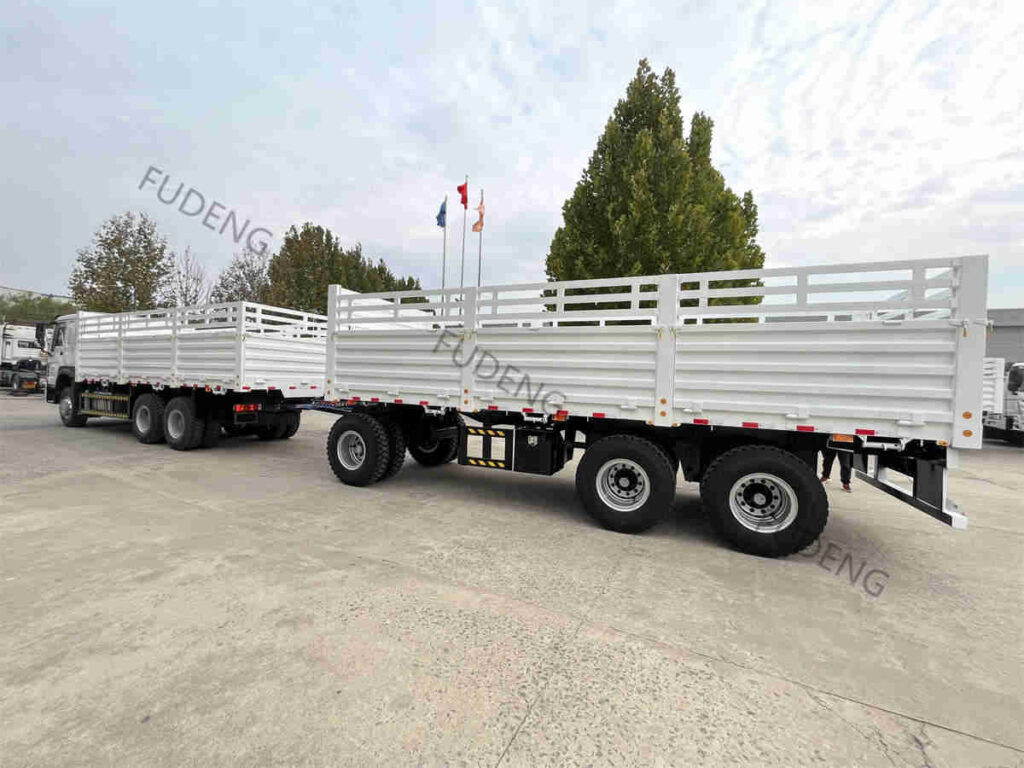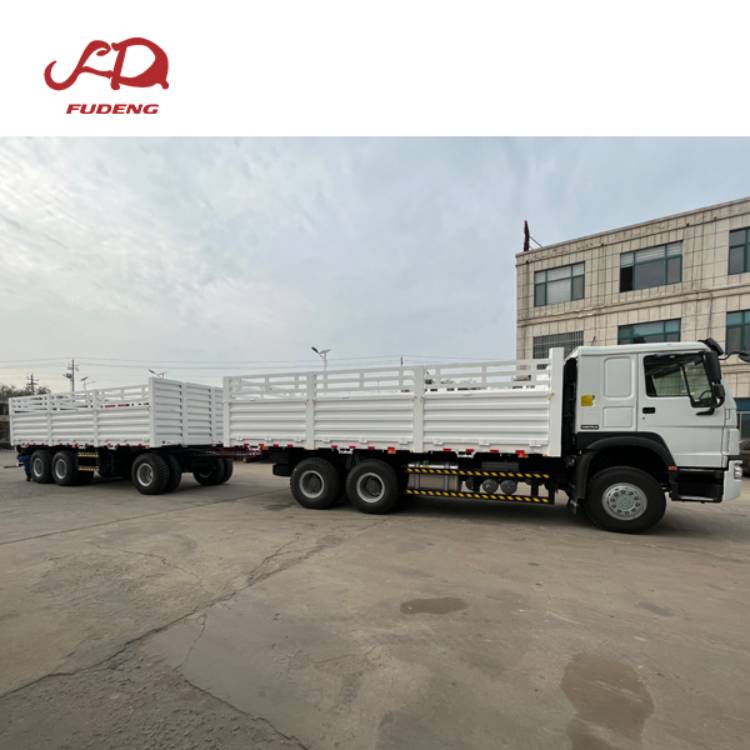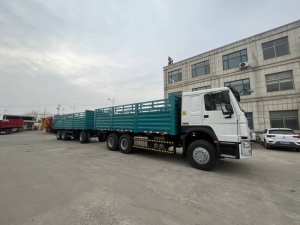Interlink trailers are becoming increasingly popular in the logistics and transportation industries, especially in regions like Africa and Australia where long-distance hauls and heavy loads are common. These trailers, also known as B-double trailers, offer unparalleled efficiency by allowing more cargo to be transported in a single trip, thereby reducing fuel consumption and operational costs. If you’re considering purchasing an interlink trailer, this guide will help you understand everything you need to know, from the benefits of these trailers to how to find the best interlink trailer for sale.
What is an Interlink Trailer?
An interlink trailer is a combination of two trailers connected by a dolly, forming an extended unit that can carry more cargo than a single trailer. The design typically includes a front trailer (lead trailer) and a rear trailer (tag trailer), with the front trailer connected to the truck and the rear trailer linked via a drawbar or dolly. This configuration allows for more payload while maintaining the stability and maneuverability of the vehicle.
Interlink trailers are widely used in industries that require the transport of bulk materials, such as mining, agriculture, and construction. They are particularly advantageous in regions with vast, open roads where the length of the trailer is not a limiting factor.
Advantages of Using Interlink Trailers
Increased Payload Capacity: One of the main benefits of using an interlink trailer is the ability to carry a significantly larger load compared to standard trailers. This is especially beneficial for businesses looking to maximize their efficiency and reduce the number of trips needed to transport goods.
Cost Efficiency: By transporting more cargo in one trip, businesses can reduce fuel costs, driver wages, and maintenance expenses. This makes interlink trailers a cost-effective solution for long-distance and heavy-duty transportation.
Versatility: Interlink trailers can be used to transport a wide variety of goods, including bulk commodities, construction materials, agricultural products, and even livestock. Their versatility makes them a valuable asset across multiple industries.
Regulatory Compliance: In regions where regulations allow for longer trailers, interlink trailers provide a legal way to increase load capacity without exceeding weight limits. This compliance with road regulations helps avoid fines and penalties while optimizing load efficiency.

Finding the Best Interlink Trailer for Sale
When looking for an interlink trailer for sale, there are several factors you should consider to ensure you make the right investment: Trailer Specifications: The first step is to determine the specifications that best suit your business needs. Consider the type of cargo you will be transporting, the typical road conditions, and the distance of your hauls. Key specifications to look at include the trailer’s payload capacity, length, axle configuration, and suspension type.
Build Quality and Materials: The quality of materials used in the construction of the trailer is crucial for its durability and performance. Look for trailers made from high-strength steel or aluminum, as these materials offer excellent durability while keeping the trailer’s weight in check.
Manufacturer Reputation: Choose a manufacturer with a solid reputation for producing reliable and durable interlink trailers. Some top manufacturers in the market include CIMC, Krone, and Schmitz Cargobull, known for their innovative designs and high-quality trailers.
New vs. Used Trailers: Decide whether you want to buy a new or used interlink trailer. New trailers come with the latest features and warranties, while used trailers are more affordable and can still offer excellent performance if they have been well-maintained.
Dealer Support and After-Sales Service: Ensure the dealer you purchase from offers strong after-sales support, including maintenance services and easy access to spare parts. This is critical for keeping your trailer in good working condition over the long term.
Customization Options: Depending on your business needs, you may require specific customizations to your interlink trailer. Many manufacturers and dealers offer customization options to tailor the trailer to your exact requirements, whether it’s additional storage compartments, specialized loading ramps, or reinforced flooring.


Popular Types of Interlink Trailers
There are various types of interlink trailers available, each designed to meet specific transportation needs. Here are some of the most common types:
Flatbed Interlink Trailers: Ideal for transporting large, heavy, or oversized items such as construction equipment, machinery, and building materials.
Tanker Interlink Trailers: Used for transporting liquids, such as fuel, chemicals, or food-grade products. These trailers are often equipped with specialized lining and insulation.
Refrigerated Interlink Trailers: Also known as reefer trailers, these are essential for transporting perishable goods that require temperature control, such as food and pharmaceuticals.
Curtainsider Interlink Trailers: These trailers are versatile and can be used to transport a wide variety of goods. The sides can be opened for easy loading and unloading, making them ideal for transporting palletized goods.
Why Invest in an Interlink Trailer?
Investing in an interlink trailer can significantly enhance your logistics operations by improving efficiency and reducing costs. These trailers are particularly advantageous for businesses involved in heavy-duty and long-distance transportation, offering a reliable solution for carrying large volumes of cargo. With the right interlink trailer, you can streamline your operations, reduce your environmental impact by lowering the number of trips, and ultimately improve your bottom line.
Frequently Asked Questions (FAQs)
1. How much does an interlink trailer cost? The cost of an interlink trailer varies depending on the manufacturer, specifications, and whether it’s new or used. On average, prices can range from $40,000 to $100,000 for new trailers, while used trailers may cost significantly less.
2. Are interlink trailers legal everywhere? Interlink trailers are legal in many regions, but regulations regarding their use vary by country and state. It’s important to check local laws and regulations to ensure compliance.
3. How do I maintain an interlink trailer? Regular maintenance of an interlink trailer includes checking the brakes, tires, suspension, and connections between the trailers. Lubricating moving parts, inspecting the chassis for damage, and ensuring proper load distribution are also critical maintenance tasks.
4. What industries benefit most from interlink trailers? Industries such as mining, agriculture, construction, and logistics benefit greatly from the use of interlink trailers due to their ability to transport large volumes of goods efficiently.
5. Can interlink trailers be customized? Yes, many manufacturers offer customization options to meet specific business needs, such as additional storage, reinforced structures, or specialized loading mechanisms.
Conclusion
Choosing the right interlink trailer for sale can be a game-changer for your business, offering unmatched efficiency and cost savings. By considering the factors mentioned above and selecting a reliable manufacturer, you can ensure that your investment in an interlink trailer will provide long-term benefits for your logistics operations. Whether you need a flatbed, tanker, refrigerated, or curtainsider interlink trailer, the right choice will depend on your specific transportation needs and operational goals.

